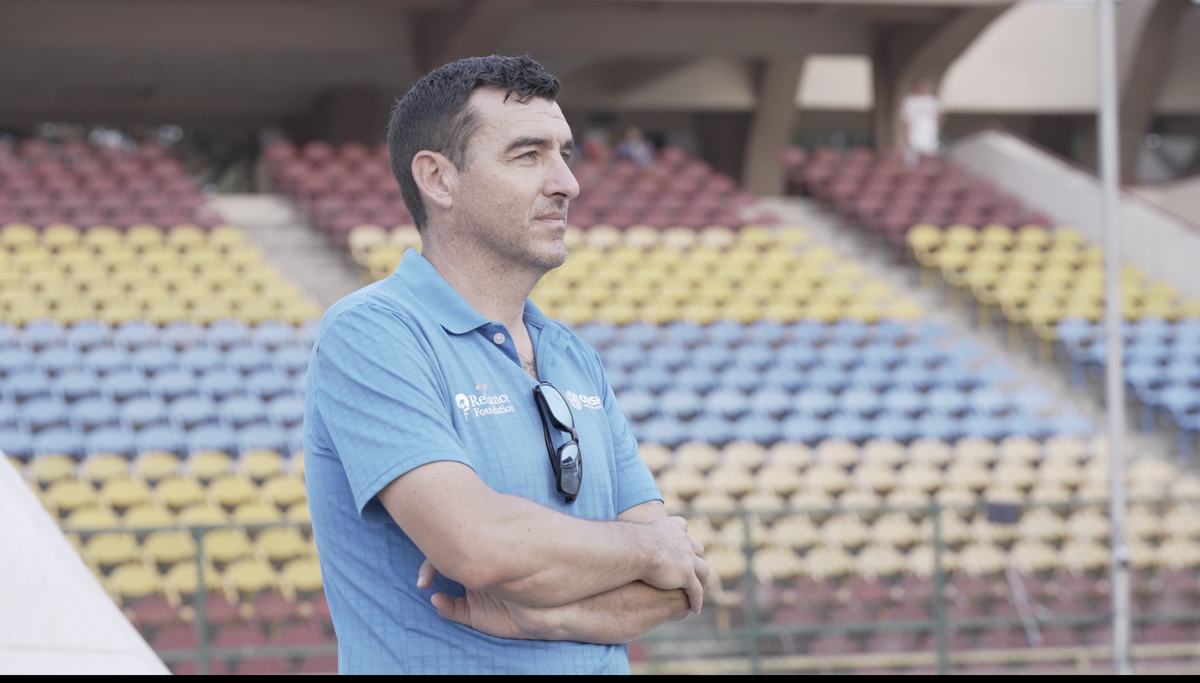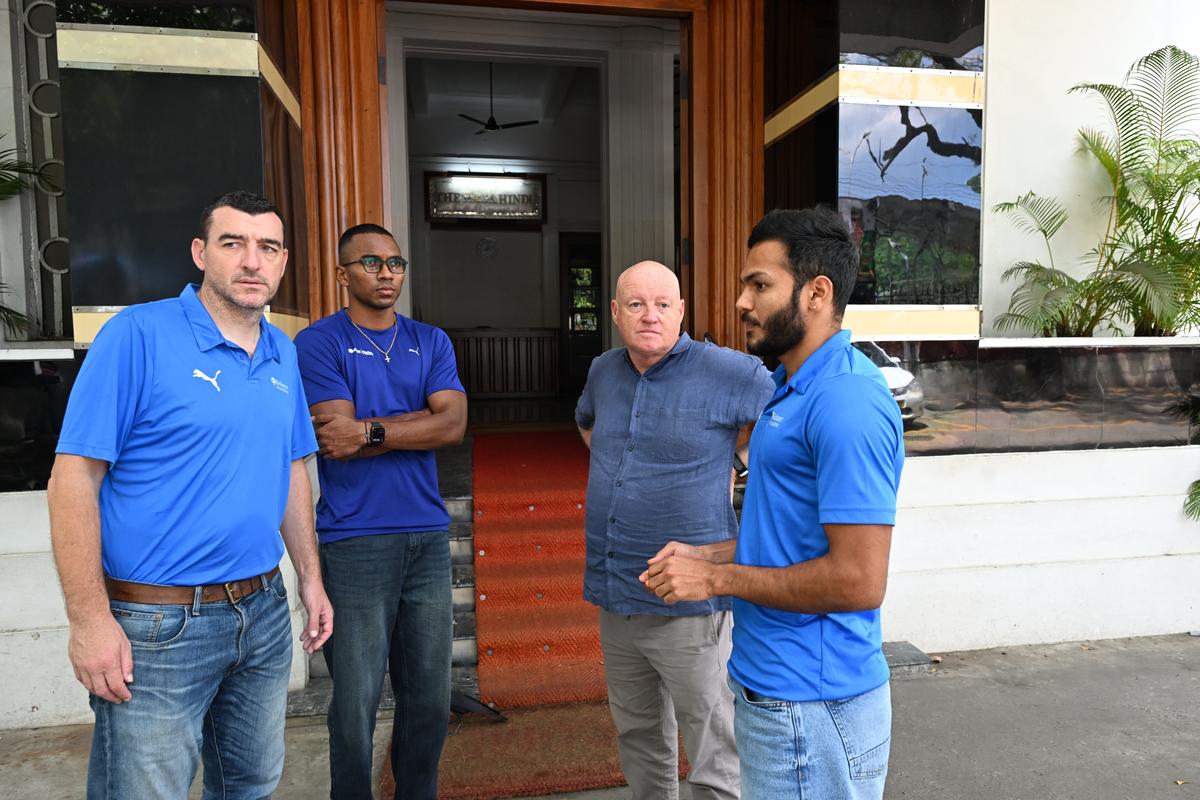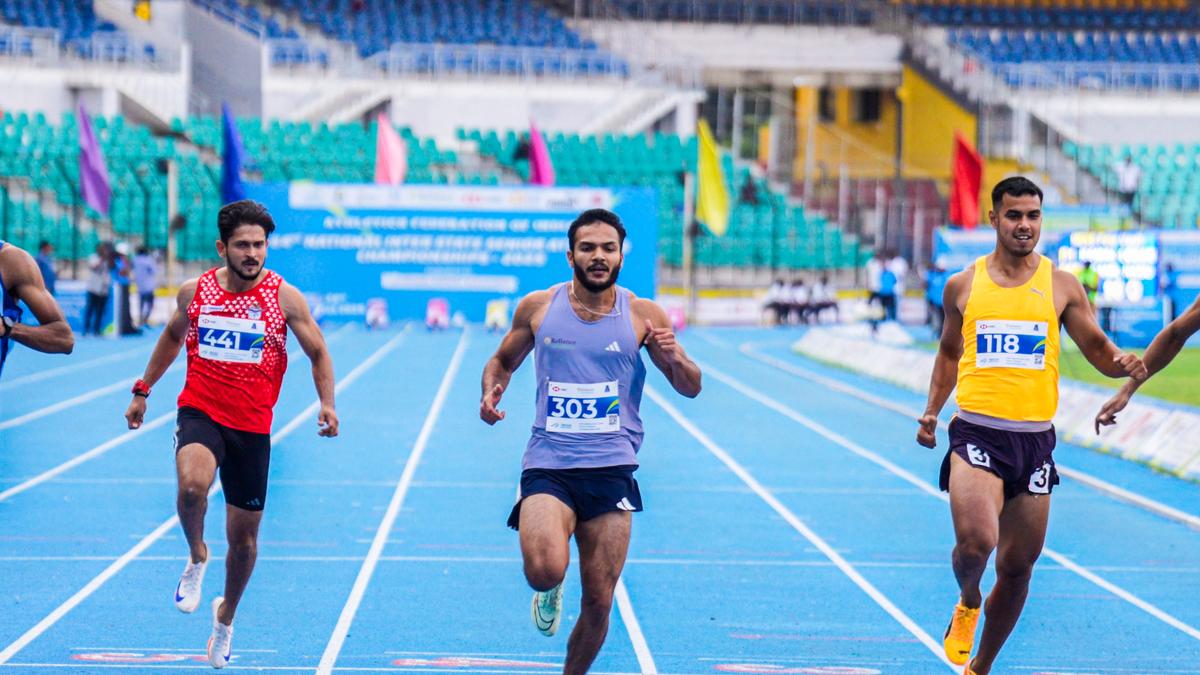Indian sprint on the surge despite administrative flip-flops
It has been a painfully sweet year for India’s short-distance runners in 2025. Animesh Kujur, India’s latest sprint headline act, is on the cusp of becoming the first Indian male sprinter to participate in the World Championships, to be held in Tokyo next month.
The 21-year-old has battled through a long, arduous season in which he ran 41 races in seven months across nine countries, breaking both the 100m and 200m National Records (NR) in the process.
The Odisha sprinter was also part of the ‘dream team’, which also included Manikanta Hoblidhar, Gurindervir Singh and Amlan Borgohain, that tore down the 4x100m relay NR set during the Delhi Commonwealth Games in 2010.
Gurindervir shattered the 100m NR with a 10.20s at the Indian Grand Prix in Bengaluru in March, only for Animesh to better it in Greece in July with 10.18s. The 200m crown at the National Inter-State Championships in Chennai is the latest accolade Animesh has added to his collection this year. Sitting down for a chat with Sportstar after the event, he shed light on the gruelling year he has endured.
“This was the last competition before the World Championships, and the coach wanted me to just get it done with. He asked me to get away from the track after the Continental Tour Bronze event in Odisha. I warmed up for the first time in a week after arriving here,” Animesh explained.
Manikanta had a similar tale. “I had no plan of participating in Inter-State. I had some pain in the adductor and missed the Continental Tour. I just did one session in Mumbai and flew here to participate,” said the 24-year-old, who finished second in 100m. “The final didn’t go to plan because I felt some tightness. God must have thought I’ll turn up without training next time,” he joked.
Animesh, too, had struggled during the Continental Tour event in his home state, pulling out of the 100m heats to focus on the 200m, after being under the weather following his European sojourn.
The relentless set of engagements this year, however, is partly of his own making. The World University Games in Bochum, Germany, had been earmarked as the marquee event for him this year. But a NR of 20.40s at the Federation Cup in Kochi in April suddenly opened the doors to the Asian Championships, which in turn ate into his training time.
Animesh ran 20.45s at the UAE Athletics Grand Prix in Dubai and followed it up with 20.55s at the Indian Grand Prix in Trivandrum. At the Asian Championships in Gumi, South Korea, he broke his own NR in 200m with 20.32s in the final, bagging bronze. With each passing event, he gathered ranking points, making the Worlds in Tokyo a serious possibility.

James Hillier called out the lack of consistency in decision-making after rules were bent to allow lower-level athletes into the Inter-State roster. He expressed dismay at elite athletes having to run three rounds at national events due to the bloated participant list, which could result in overuse injuries.
| Photo Credit:
Special Arrangement
James Hillier called out the lack of consistency in decision-making after rules were bent to allow lower-level athletes into the Inter-State roster. He expressed dismay at elite athletes having to run three rounds at national events due to the bloated participant list, which could result in overuse injuries.
| Photo Credit:
Special Arrangement
“He’s earned his right to be competing at this level [Worlds],” said James Hillier, Athletics Director, Reliance Foundation. “He’s been developing very well and this hasn’t happened overnight. He should view the Worlds as just another event and shouldn’t view the athletes as better than him.” Despite his achievements, Animesh has had to endure a fair share of setbacks this year. The Asian Championships ended in a damp squib for the 4x100m relay team after it was disqualified in the heats following a botched baton exchange.
“We had the relay medal in our hands and let it go. Hum bas Gumi ghoomke aagaye bas (We just went around Gumi and returned),” Manikanta joked.
Despite the amusement in hindsight, Hillier said the episode had a negative impact on the athletes, who were hoping to win their first continental medal. He was also miffed at the Athletics Federation of India (AFI) after Animesh and Gurindervir weren’t chosen to run in the heats.
“It was tough on all of us. We put together a winning team that had good chemistry, but ultimately some decisions were taken which were beyond our control. I felt for these guys because this was an opportunity to get a medal,” he said.
“Manikanta and Gurindervir had qualified for the individual 100m, but they weren’t allowed to participate either. The selection policy wasn’t followed, and this plays with athletes’ minds. Manikanta really struggled in Europe [after the Asian Championships] because of the mental toll. Gurindervir too lost form ahead of the University Games and was forced to sit out,” Hillier added.
Hillier said he has pointed out several areas of discomfort preventing elite athletes from performing at their best. Most remain unaddressed. One such problem has been the daunting schedules during national events, which do not take into account recovery time. “Manikanta had three races on the same day [at the Inter-State]. First at 7:30 am, and then back by 5:30 pm for the semifinal and then the final. How can you expect an athlete to perform?” he asked.
Martin Owens, Head Coach at the Odisha Reliance Foundation High Performance Centre, under whom Animesh trains, highlighted the lack of clarity in turning national events into trials for major competitions. “Most federations lay down the qualifying criteria at the beginning of the year. Part of the problem here is that they’re playing it on the fly all the time. There’s always a meet to qualify for a meet, and a trial to qualify for another trial,” he said.
Hillier also called out the lack of consistency in decision-making after rules were bent to allow lower-level athletes into the Inter-State roster. He expressed dismay at elite athletes having to run three rounds at national events due to the bloated participant list, which could result in overuse injuries.
“Athletes must be put first. In India, I see knee, thigh and hip flexor injuries. You don’t get these injuries in athletics. There are too many high-intensity races to be able to sustain yourself,” he added. Owens echoed Hillier’s thoughts. He suggested that a preliminary round be held, as in the Worlds and Olympics, before ranked athletes enter. “I’m not saying all championships should just be geared to the elite and that lower-level shouldn’t compete against the elite. Only when they do will they get inspired. But at the same time elite athletes shouldn’t suffer,” Owens said.
All ears: Animesh Kujur with Martin Owens during a training session. The star athlete trains under Owens at the Odisha Reliance Foundation High Performance Centre.
| Photo Credit:
Special Arrangement
All ears: Animesh Kujur with Martin Owens during a training session. The star athlete trains under Owens at the Odisha Reliance Foundation High Performance Centre.
| Photo Credit:
Special Arrangement
A major reason for the improvement of the short-distance runners has been the constant competition among themselves. Both coaches believe athlete-friendly events and a closely competitive talent pool will be key in helping athletes climb up the ladder. “Success breeds success. Once somebody breaks the record, the other person says, ‘Why can’t I do it?’ That’s the culture we need. Then the sub-10s, sub-20s and sub-45s will happen,” Hillier said.
“Everyone needs to speak the same language — the coaches, the media, the federation. That’s how we’re going to make this happen,” he added.
Start young, start right
Indian athletics’ significant step forward over the last decade has been restricted to improving the performances of the country’s top athletes rather than identifying more talent, reckoned Owens.
Neeraj Chopra’s unprecedented international success has set the stage for greater interest in javelin throw. But role models alone cannot spur an athletics revolution, he said.
“There are plenty of competitions in India at the top end, but not enough at the grassroots. Kids need to compete,” Owens said.
“It doesn’t have to be electronic timing or synthetic tracks. It can just be in a field. We see plenty of kids play cricket but not everybody plays at Chepauk, do they? You need kids who want to get out there and be the next Manikanta Hoblidhar, Animesh Kujur or Tamil Arasu,” he added.
Hillier also echoed Owens’ sentiments, adding that “talent needs to find the system and not the other way round.”
“There is an obsession with trying to find a story. ‘We went to a village, where there’s a six-year-old throwing a stick, and 20 years later he becomes another Neeraj.’ It never works like that. You run competitions everywhere. That’s your talent ID,” he said.
“We are not teaching people the right things. You’ve got to teach movement skills, and then, by default, people will stick their heads up and say, ‘I’m talented,’” Hillier added.
Owens and Hillier also bemoaned the lack of women’s participation in athletics.
“Many athletes like Jyoti [Yarraji] and Rupal [Chaudhury] have been successful in spite of the system. These athletes had everything against them, yet somehow survived,” Hillier said.
“It is very depressing that there are so many straight finals in the women’s events. You cannot tell me that a population of 1.4 billion are all men. We need to encourage girls and women to do the sport, and that is vitally important,” Owens remarked.

Teaming up: (L-R) Hillier, Animesh, Owens and Manikanta at the office of The Hindu post their conversation with Sportstar.
| Photo Credit:
B. Jothi Ramalingam
Teaming up: (L-R) Hillier, Animesh, Owens and Manikanta at the office of The Hindu post their conversation with Sportstar.
| Photo Credit:
B. Jothi Ramalingam
The coaches also cautioned against pushing young athletes too early into specialisation. Hillier explained a proposal he had put forward during his UK Athletics stint — a three-sport model for kids between seven and 13, where 50 per cent of the time is dedicated to athletics, followed by a two-sport model between 13 and 18.
The craving for early success is another issue plaguing the grassroots. Coaches are being judged on medals rather than on the improvement they bring about in athletes.
“Development coaches must be rewarded for getting athletes to move better. Instead, they’re rewarded for medals. You don’t have to be a high achiever at 16 or 17. Studies show there needs to be some exposure at 13, but things don’t really start happening until the 20s,” Hillier said.
Published on Aug 28, 2025



